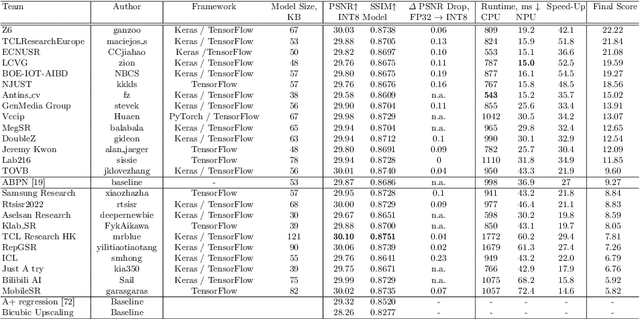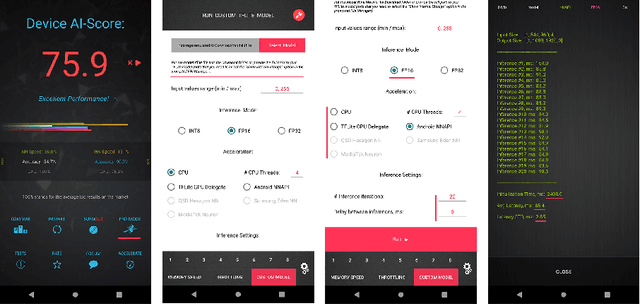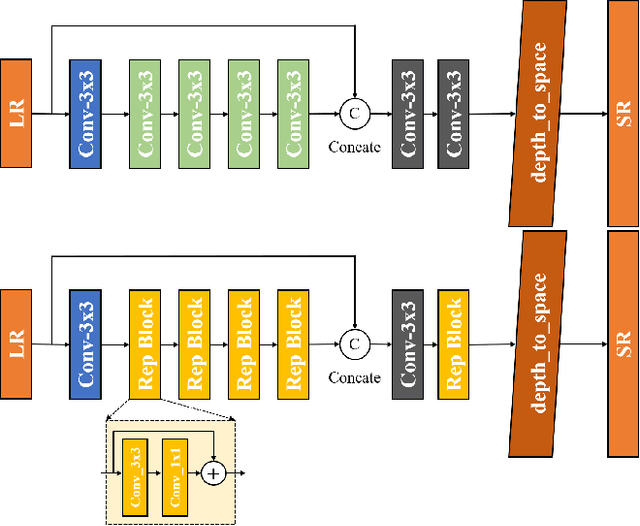Yanbo Ma
Efficient and Accurate Quantized Image Super-Resolution on Mobile NPUs, Mobile AI & AIM 2022 challenge: Report
Nov 07, 2022



Abstract:Image super-resolution is a common task on mobile and IoT devices, where one often needs to upscale and enhance low-resolution images and video frames. While numerous solutions have been proposed for this problem in the past, they are usually not compatible with low-power mobile NPUs having many computational and memory constraints. In this Mobile AI challenge, we address this problem and propose the participants to design an efficient quantized image super-resolution solution that can demonstrate a real-time performance on mobile NPUs. The participants were provided with the DIV2K dataset and trained INT8 models to do a high-quality 3X image upscaling. The runtime of all models was evaluated on the Synaptics VS680 Smart Home board with a dedicated edge NPU capable of accelerating quantized neural networks. All proposed solutions are fully compatible with the above NPU, demonstrating an up to 60 FPS rate when reconstructing Full HD resolution images. A detailed description of all models developed in the challenge is provided in this paper.
Multi-frame Joint Enhancement for Early Interlaced Videos
Sep 29, 2021



Abstract:Early interlaced videos usually contain multiple and interlacing and complex compression artifacts, which significantly reduce the visual quality. Although the high-definition reconstruction technology for early videos has made great progress in recent years, related research on deinterlacing is still lacking. Traditional methods mainly focus on simple interlacing mechanism, and cannot deal with the complex artifacts in real-world early videos. Recent interlaced video reconstruction deep deinterlacing models only focus on single frame, while neglecting important temporal information. Therefore, this paper proposes a multiframe deinterlacing network joint enhancement network for early interlaced videos that consists of three modules, i.e., spatial vertical interpolation module, temporal alignment and fusion module, and final refinement module. The proposed method can effectively remove the complex artifacts in early videos by using temporal redundancy of multi-fields. Experimental results demonstrate that the proposed method can recover high quality results for both synthetic dataset and real-world early interlaced videos.
 Add to Chrome
Add to Chrome Add to Firefox
Add to Firefox Add to Edge
Add to Edge